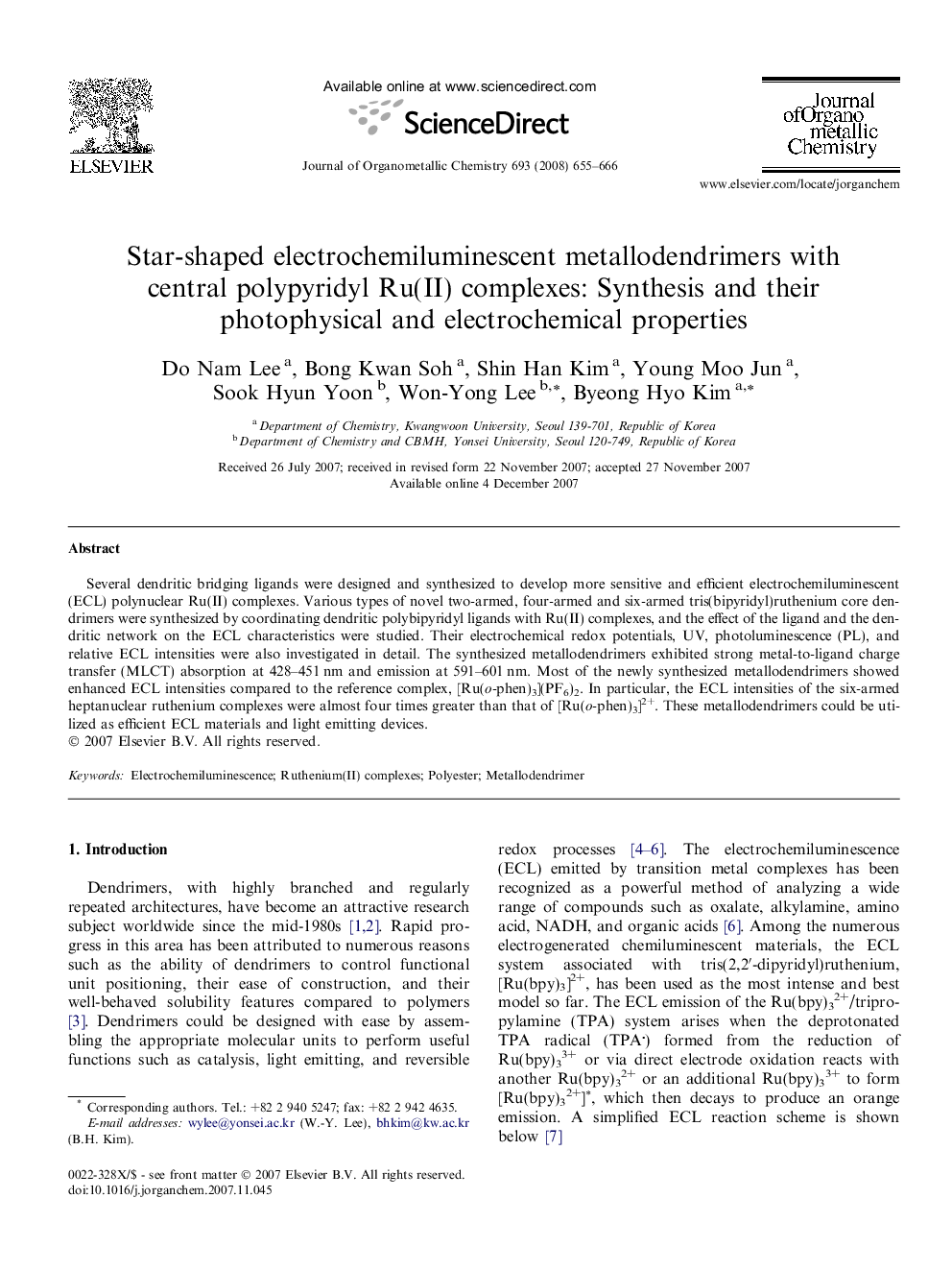| Article ID | Journal | Published Year | Pages | File Type |
|---|---|---|---|---|
| 1323342 | Journal of Organometallic Chemistry | 2008 | 12 Pages |
Several dendritic bridging ligands were designed and synthesized to develop more sensitive and efficient electrochemiluminescent (ECL) polynuclear Ru(II) complexes. Various types of novel two-armed, four-armed and six-armed tris(bipyridyl)ruthenium core dendrimers were synthesized by coordinating dendritic polybipyridyl ligands with Ru(II) complexes, and the effect of the ligand and the dendritic network on the ECL characteristics were studied. Their electrochemical redox potentials, UV, photoluminescence (PL), and relative ECL intensities were also investigated in detail. The synthesized metallodendrimers exhibited strong metal-to-ligand charge transfer (MLCT) absorption at 428–451 nm and emission at 591–601 nm. Most of the newly synthesized metallodendrimers showed enhanced ECL intensities compared to the reference complex, [Ru(o-phen)3](PF6)2. In particular, the ECL intensities of the six-armed heptanuclear ruthenium complexes were almost four times greater than that of [Ru(o-phen)3]2+. These metallodendrimers could be utilized as efficient ECL materials and light emitting devices.
Graphical abstractStar-shaped metallodendrimers of polynuclear ruthenium complexes were synthesized and their photophysical and electrochemical properties were studied.Figure optionsDownload full-size imageDownload as PowerPoint slide
